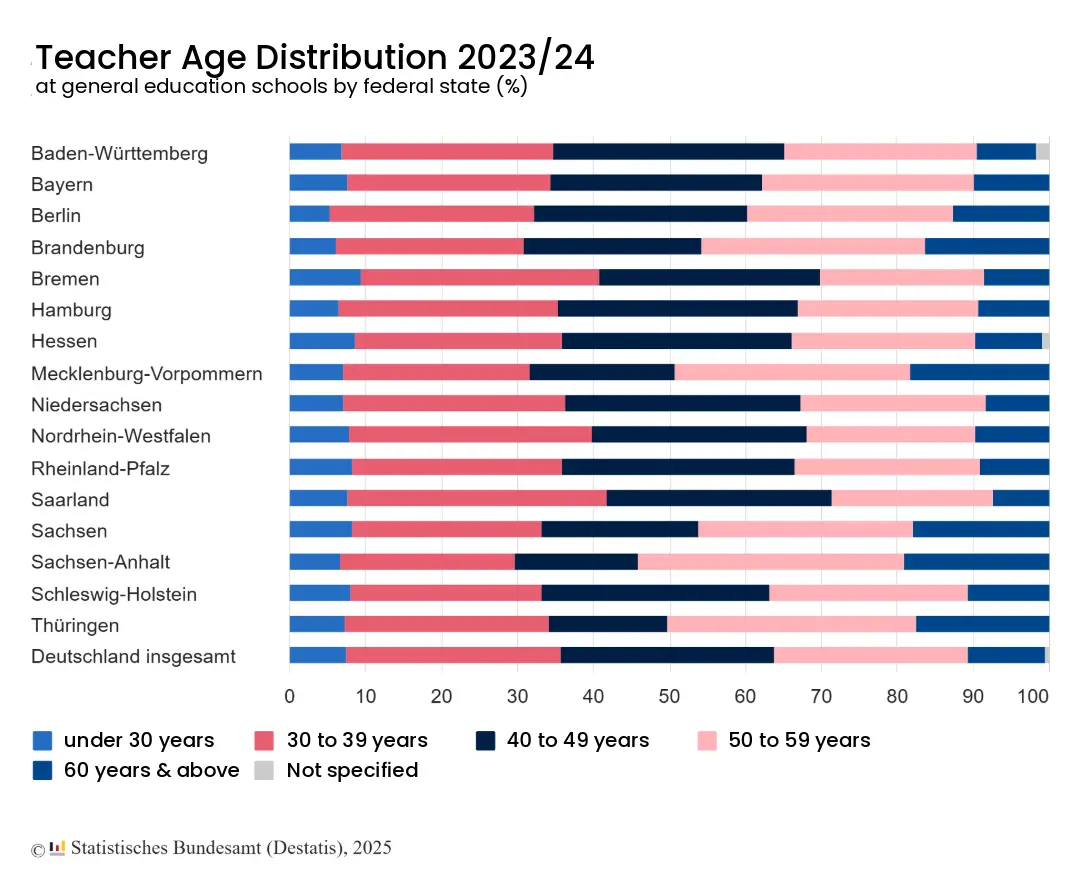
The share of part-time teachers in Germany’s general education schools has reached a new record. According to the Federal Statistical Office (Destatis), 43.1% of the approximately 739,500 teachers nationwide worked part-time in the 2023/24 school year. This marks a slight increase from the previous year’s 42.3% and reflects a continuing shift in working patterns within the profession. Only full-time and part-time teachers are considered here; hourly employees are not included.

The data highlights a significant gender gap: more than half of female teachers (50.7%) were employed part-time, compared to just 22.6% of their male colleagues. Statisticians point to the high proportion of women in the profession, nearly three-quarters (73.1%) of teachers, as a key factor behind the above-average part-time rate. By contrast, across all economic sectors in Germany, women represented only 48.1% of the workforce, and the overall part-time employment rate stood at 30.9% in 2023.
Part-time teaching rates vary widely between federal states. Hamburg recorded the highest proportion at 55%, followed by Bremen (52.2%) and Baden-Württemberg (50.1%). At the other end of the spectrum, Saxony-Anhalt (23.1%) and Thuringia (23.0%) had the lowest rates.

The age structure of the teaching workforce also reveals potential challenges ahead. More than one in three teachers (35.7%) was at least 50 years old in 2023/24, including 10.3% aged 60 or over. A further 25.4% were between 50 and 59 years old. In contrast, younger teachers under 35 made up just 20.8% of the profession.
Regional differences are again pronounced. Saxony-Anhalt has the oldest teaching workforce, with 54% aged 50 or above, closely followed by Thuringia at 50%. Bremen (30.1%) and Saarland (28.4%) have the youngest profiles.
With a growing share of teachers working part-time and an aging workforce, schools across Germany may face increased pressure to recruit and retain staff in the coming years. The data underscores the need for workforce planning, particularly in regions with high part-time rates and older age profiles.